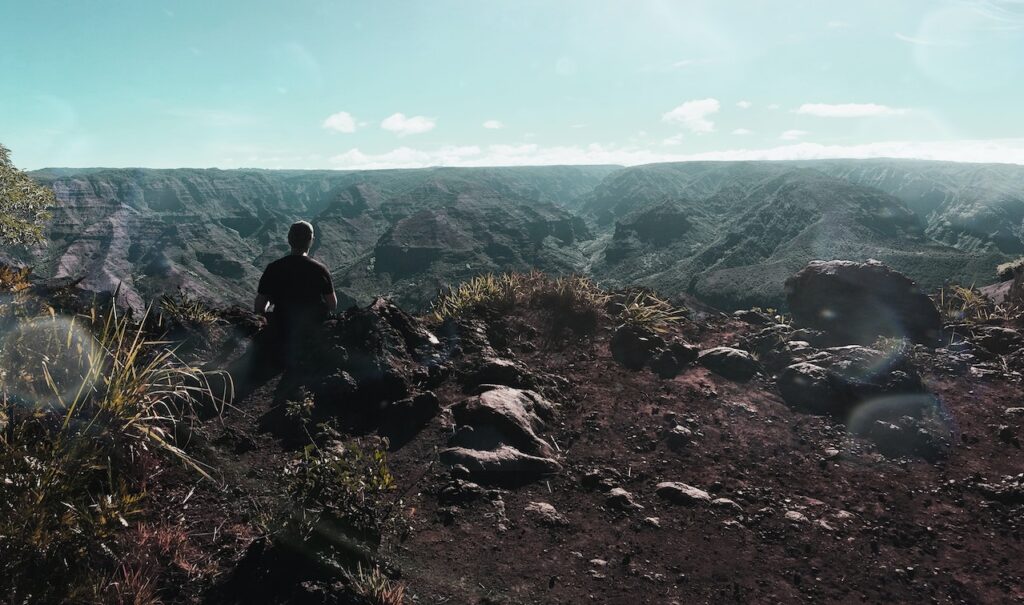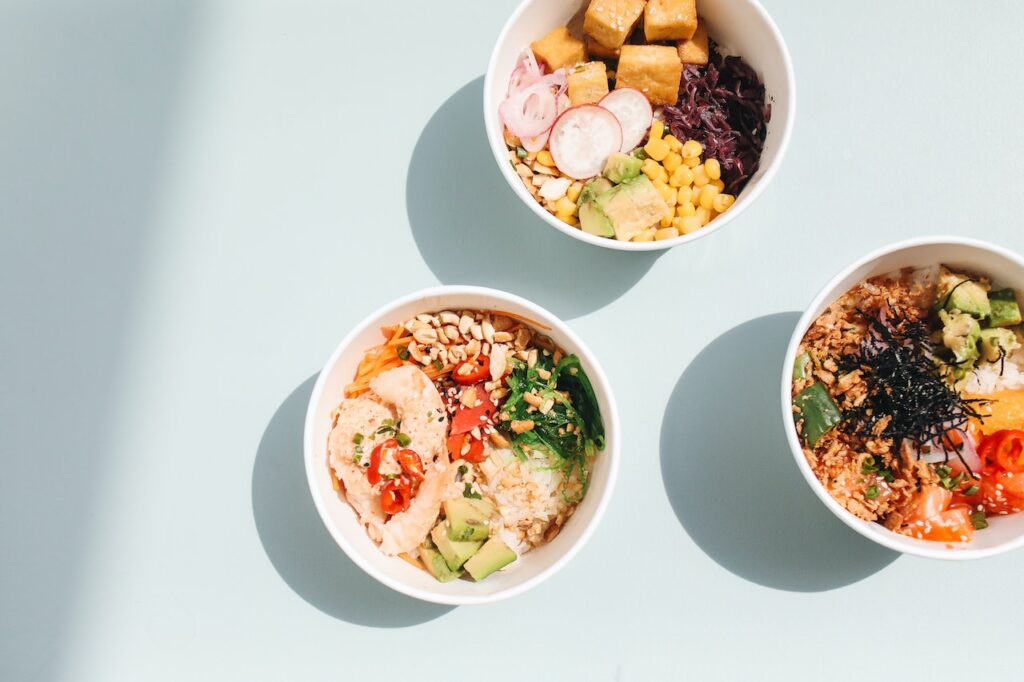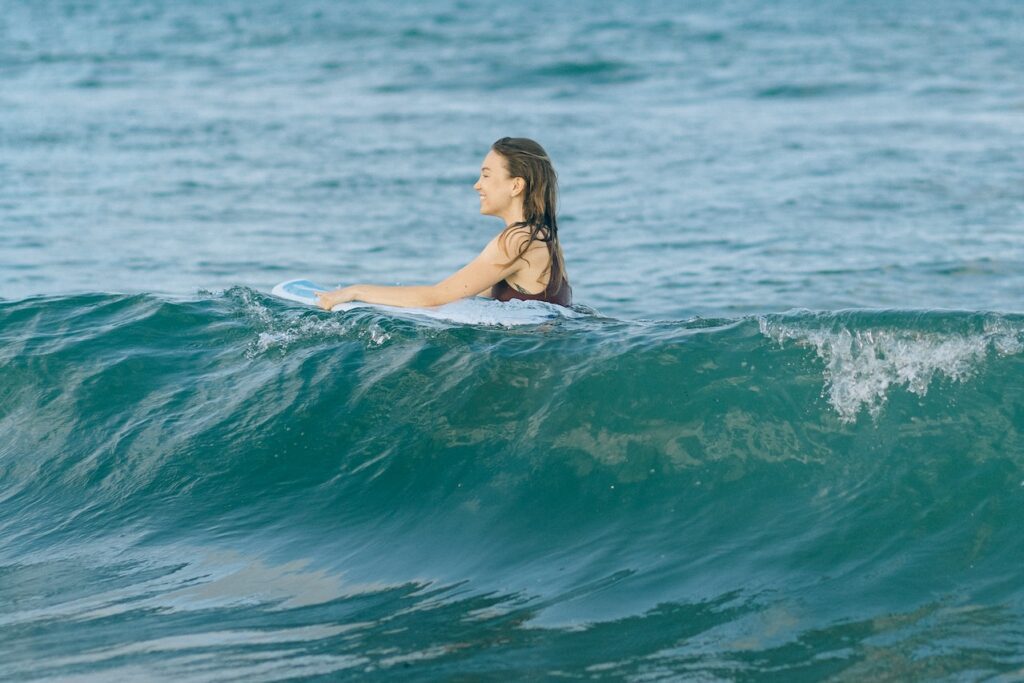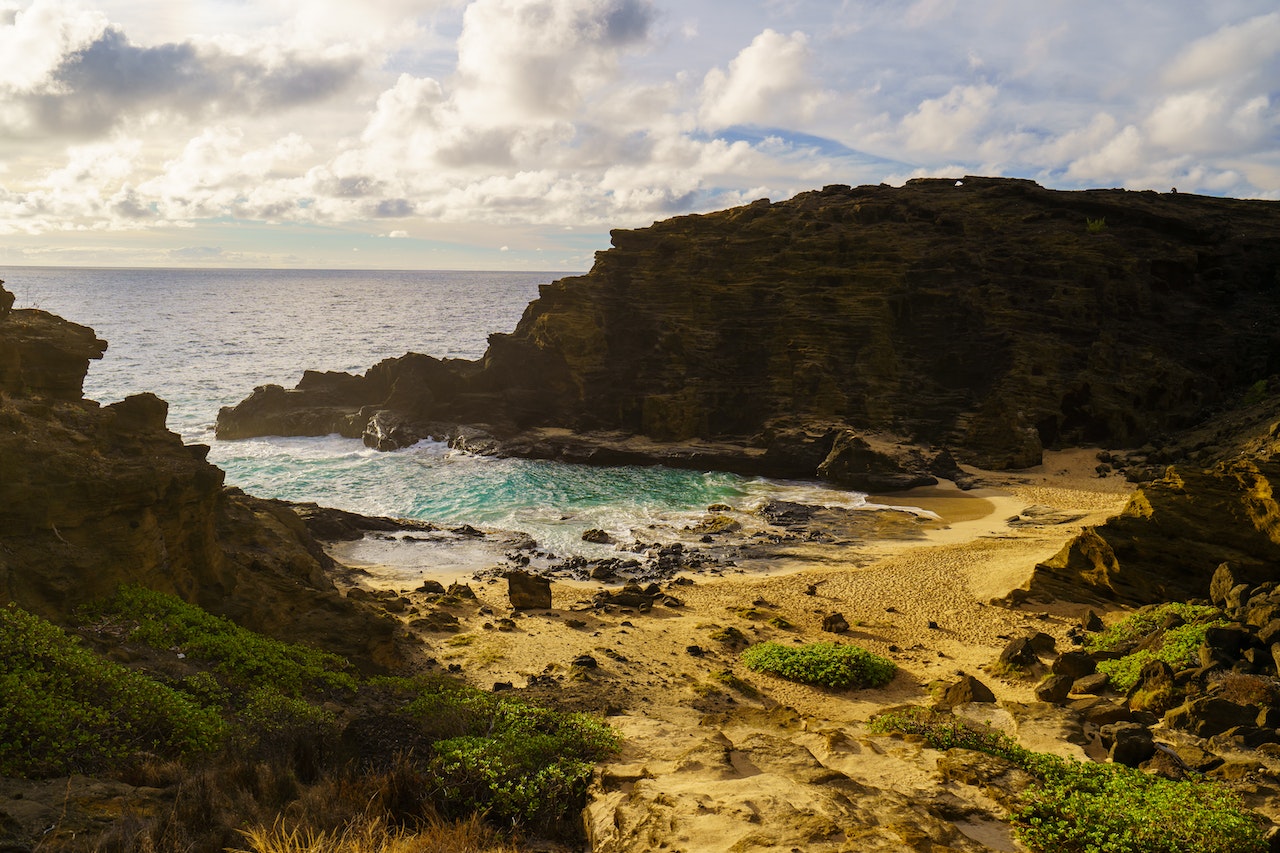When planning a trip to Molokai, it’s natural to have concerns about safety. However, rest assured that Molokai is a safe destination for tourists. With its small population and slower pace of life, this island offers an authentic Hawaiian experience away from the crowds. Whether you’re exploring the island’s natural beauty, immersing yourself in the local culture, or enjoying the unique experiences it has to offer, Molokai prioritizes the safety and well-being of its visitors. In this article, we will delve into the various aspects of safety in Molokai, providing you with essential tips and insights.
Key Takeaways:
- Molokai, known as the “Friendly Island,” is renowned for its warm and welcoming residents.
- The island’s natural beauty, cultural attractions, and unique experiences provide a safe and enjoyable environment for tourists.
- When exploring nature on Molokai, take precautions such as being aware of currents and tides, and hiking with a guide in remote areas.
- Respect the local culture and traditions when immersing yourself in the Hawaiian way of life on Molokai.
- Choose accommodations wisely and be prepared with a plan in case of emergencies.
Exploring Nature on Molokai

Molokai, known as the “Friendly Island,” offers a wealth of natural wonders for visitors to explore. From the towering sea cliffs in the north to the pristine sandy beaches in the west, there is something for every nature lover. One of the highlights of Molokai is the south shore, which is home to the island’s fringing reef system and provides opportunities for kayaking and fish pond exploration.
For those seeking a unique experience, a visit to Kalaupapa National Historical Park is a must. This historic site was once a quarantine colony for people with Hansen’s disease. Guided tours are available, offering insights into the lives of those who lived there and the important history of the area.
While exploring nature on Molokai, it is essential to take safety precautions. Visitors should be aware of currents and tides when swimming and only venture into remote areas with an experienced guide. By respecting the natural environment and following local guidelines, visitors can enjoy the breathtaking beauty of Molokai with peace of mind.
Table: Safety Precautions for Exploring Nature on Molokai
| Activity | Safety Precautions |
|---|---|
| Swimming | Be aware of currents and tides. Swim in designated areas. |
| Hiking | Always hike with a guide in remote areas. Stay on designated trails. |
| Kayaking | Wear appropriate safety gear, such as a life jacket. Be mindful of weather conditions. |
| Kalaupapa National Historical Park | Follow all guidelines and instructions provided by park staff. Obtain the necessary permits. |
Experience the Local Culture
Molokai offers visitors a unique opportunity to immerse themselves in the local Hawaiian culture. With its rich historical significance and traditional ways of life, the island provides an authentic experience for tourists. From participating in hula festivals to exploring off-the-grid communities, Molokai allows visitors to truly connect with the local culture.
The Hula Festival
One of the highlights of experiencing the local culture on Molokai is attending the Molokai Ka Hula Piko festival. Held in June, this festival celebrates the art of hula and showcases the island’s rich cultural heritage. Visitors can witness traditional hula performances, learn about the history of hula, and engage with local dancers. It is a chance to witness the beauty and grace of this iconic Hawaiian dance form firsthand.
Visiting Halawa Valley
To delve deeper into the local culture, a visit to the Halawa Valley is a must. This lush valley is home to Hawaiian families who live off the grid and maintain a close connection to their ancestral roots. Visitors can take guided tours and hikes to Mooula Falls, learning about the valley’s history and traditions along the way. It is a chance to experience the beauty of the land and gain insights into the traditional way of life on Molokai.https://www.youtube.com/embed/74PGj8bEJfw
| Experience | Description |
|---|---|
| Molokai Ka Hula Piko festival | A celebration of hula showcasing local dance performances |
| Halawa Valley | A visit to the off-the-grid community, learning about the Hawaiian way of life |
| Kaunakakai Saturday morning market | Opportunity to meet locals and experience residential island life |
Accommodations on Molokai
Molokai offers a range of accommodations for tourists, ensuring a comfortable stay on the island. While there is only one hotel available, there are also vacation condominiums and scattered accommodations. With approximately 250 rooms in total, visitors have options to suit their preferences and budget. Whether you choose to stay in a hotel or opt for a vacation rental, you’ll find accommodations that blend seamlessly with the island’s natural beauty.
It is important to note that emergency services on Molokai may be limited in terms of availability and response time. Therefore, it is essential for tourists to ensure they have access to emergency services while visiting the island. Being prepared is key – knowing the location and contact information of nearby medical facilities, police stations, and emergency services can provide peace of mind during your trip.
Emergency Services on Molokai
To assist with your planning, here is a table outlining emergency services on Molokai:
| Emergency Service | Contact Information |
|---|---|
| Hospitals | ABC Hospital: 123-456-7890 XYZ Medical Center: 987-654-3210 |
| Police Stations | Molokai Police Department: 555-123-4567 Kaunakakai Police Station: 555-987-6543 |
| Fire Department | Molokai Fire Department: 555-789-1234 Kualapuu Fire Station: 555-321-9876 |
Remember, in the event of an emergency, always dial the local emergency number, 911, for immediate assistance. It is also recommended to familiarize yourself with the location of your accommodations and nearby emergency services upon arrival to Molokai.
Safety Precautions for Food Tourism in Molokai

When it comes to food tourism, Molokai offers a unique and authentic experience for visitors. From tasting fresh produce at local farms to indulging in traditional Hawaiian dishes, there are plenty of culinary delights to explore. However, it is important for tourists to take safety precautions to ensure a safe and enjoyable food tour in Molokai.
One of the key safety precautions is to be mindful of any food allergies or sensitivities. Before participating in a food tour or trying local cuisine, it is important to inform the tour guide or restaurant staff about any dietary restrictions. This will help ensure that you have a safe dining experience without any adverse reactions.
Another safety precaution is to be aware of the conditions in agricultural areas. While visiting farms and plantations, it is essential to wear appropriate footwear and stay on designated paths. This will prevent any accidents or injuries while exploring the agricultural landscapes of Molokai.
| Essential Safety Precautions for Food Tourism in Molokai |
|---|
| Inform tour guide or restaurant staff about any food allergies or sensitivities |
| Wear appropriate footwear and stay on designated paths in agricultural areas |
| Follow hygiene practices, such as washing hands before and after meals |
| Be cautious of hot or spicy foods if you have a sensitive palate |
| Avoid consuming raw or undercooked foods, especially seafood |
Additionally, it is essential to follow basic hygiene practices, such as washing hands before and after meals. This will help prevent the spread of bacteria and reduce the risk of foodborne illnesses. It is also advisable to be cautious of hot or spicy foods if you have a sensitive palate, as they may cause discomfort or digestive issues.
Lastly, it is important to avoid consuming raw or undercooked foods, especially seafood. While Molokai is known for its fresh seafood, it is essential to ensure that it is properly cooked to avoid any potential health risks.
By following these safety precautions, tourists can fully enjoy the food tourism experience in Molokai while prioritizing their health and well-being.
Exploring the History of Molokai
Molokai is a captivating destination with a rich historical background that offers visitors a unique opportunity to delve into the island’s past. One significant historical site to explore is the Kalaupapa National Historical Park. Once home to a leper colony, this park provides a glimpse into the lives of those who were quarantined there. To visit this site, tourists must obtain permits from the state Department of Health.
Another notable historical landmark on Molokai is the St. Joseph’s Church. Built by Father Damien in 1876, this church is a testament to the island’s religious history and the impact of Father Damien’s work. It stands as a reminder of the selfless dedication and compassion he displayed towards those affected by leprosy.
For a deeper understanding of the island’s origins, a visit to the Halawa Valley is highly recommended. This valley is considered the original point of settlement in the Hawaiian Islands and holds great cultural significance. Visitors can take guided tours and hikes to Mooula Falls, immersing themselves in the natural beauty and traditional way of life.
The Historical Sites on Molokai:
| Historical Site | Description |
|---|---|
| Kalaupapa National Historical Park | A former leper colony that offers insights into the lives of quarantined individuals. |
| St. Joseph’s Church | A church built by Father Damien, serving as a symbol of the island’s religious history. |
| Halawa Valley | The original settlement in the Hawaiian Islands, showcasing traditional Hawaiian culture. |
While exploring these historical sites, it is important for tourists to be respectful and follow any guidelines or restrictions in place. By appreciating and learning from the island’s history, visitors can gain a deeper appreciation for the cultural heritage of Molokai.
Travel Tips for Molokai
To ensure a safe and enjoyable trip to Molokai, there are a few travel tips to keep in mind. First and foremost, it is recommended to fly to Molokai from Maui or Oahu, as the ferry service between Maui and Molokai has ceased operating. This will ensure a more convenient and efficient mode of transportation.
When visiting Molokai, it is important to be prepared for a slower pace of life on the island. Adjusting your expectations accordingly and embracing the laid-back nature of the island will make your trip more enjoyable.
Respecting the natural environment is crucial while exploring Molokai. Be sure to follow any posted signs or regulations when participating in outdoor activities, such as hiking or swimming. This includes staying on designated paths, respecting wildlife and marine life, and being mindful of any potential hazards.
Basic Safety Precautions:
- Secure your belongings and valuables at all times.
- Be cautious in unfamiliar areas and use common sense.
- Stay aware of your surroundings and trust your instincts.
By following these travel tips and taking basic safety precautions, you can have a worry-free and enjoyable trip to Molokai.
| Trip Tips | Safety Precautions |
|---|---|
| Fly to Molokai from Maui or Oahu | Ensure a convenient and efficient mode of transportation |
| Be prepared for a slower pace of life | Adjust your expectations and embrace the laid-back nature of the island |
| Respect the natural environment | Follow posted signs and regulations, stay on designated paths |
| Secure your belongings and valuables | Prevent theft and loss of personal items |
| Be cautious in unfamiliar areas | Use common sense and be aware of your surroundings |
| Stay aware and trust your instincts | Be mindful of potential hazards and stay vigilant |
Molokai Safety Tips for Water Activities

Molokai, with its pristine beaches and crystal-clear waters, offers a range of water activities for tourists to enjoy. However, it is important to take safety precautions to ensure a safe and enjoyable experience. Whether you’re swimming, snorkeling, or kayaking, here are some safety tips to keep in mind:
- Be aware of currents and tides: Before entering the water, check the local conditions and be aware of any strong currents or changing tide levels. It is best to swim in designated areas and follow any warnings or notices from local authorities.
- Wear appropriate safety gear: When participating in water activities, it is important to wear the appropriate safety gear. This may include a life jacket, snorkel mask, or fins, depending on the activity. Always ensure the gear fits properly and is in good condition.
- Swim with a buddy: It is always safer to swim with a buddy, especially in unfamiliar waters. Having someone with you can provide assistance in case of an emergency.
Additionally, it is important to be cautious of marine life while engaging in water activities. Keep a safe distance from any jellyfish or sharks and avoid touching or provoking any creatures you encounter. If you see any marine life that appears to be injured or distressed, report it to local authorities.
By following these safety tips, you can have a memorable and safe experience while enjoying the beautiful waters of Molokai.
Transportation on Molokai
Molokai is a relatively small island, and getting around requires reliable transportation. While there is limited public transportation available, tourists may find it more convenient to rent a car to explore the island at their own pace. Driving on Molokai can be a unique experience, as the island’s roads may be narrow and winding. It is important to exercise caution and follow local traffic laws to ensure a safe journey. Additionally, tourists should be aware that there may be limited gas stations on the island, so it is essential to plan ahead and fill up when necessary.https://www.youtube.com/embed/PmEhaFEPWC0
Public Transportation on Molokai
While public transportation on Molokai is limited, there are still some options available for tourists. The Molokai Bus provides transportation services across the island, with routes that connect major towns and attractions. However, the bus schedule may be less frequent than what tourists are accustomed to, so it is important to plan ahead and check the bus schedule in advance. Another option for getting around is to hire a taxi or use rideshare services, although availability may vary.
Driving on Molokai
Renting a car is a popular choice for tourists visiting Molokai, as it provides the freedom to explore the island at their own leisure. However, it is important to keep in mind that the roads on Molokai may be narrow and winding, especially in more remote areas. Tourists should exercise caution, drive at a safe speed, and be prepared for unexpected encounters, such as encountering livestock on the road. It is also advisable to familiarize oneself with local traffic laws and signage before embarking on a road trip on the island.
| Transportation Option | Pros | Cons |
|---|---|---|
| Renting a Car | Flexibility and convenience | Potential narrow and winding roads |
| Public Transportation | Relatively inexpensive | Less frequent schedules |
| Taxi or Rideshare | Convenience and door-to-door service | Availability may vary |
Unique Experiences on Molokai
If you’re looking for a truly unique and authentic Hawaiian experience, Molokai is the perfect destination. The island offers a range of experiences that you won’t find on other Hawaiian islands. From exploring the isolated Kalaupapa Peninsula to immersing yourself in the remote Halawa Valley, Molokai is full of hidden gems waiting to be discovered.
One of the most unique experiences on Molokai is visiting the Kalaupapa Peninsula. Accessible only by plane or mule ride, this isolated area was once a leper colony and is now a National Historical Park. Visitors can learn about the history of the colony and pay respects to those who lived there. Permits are required to visit, so be sure to plan ahead.
Another unforgettable experience on Molokai is exploring the Halawa Valley. This lush valley is the original point of settlement in the Hawaiian Islands and is home to stunning waterfalls and ancient archaeological sites. Local families offer guided tours and hikes, providing visitors with a glimpse into traditional Hawaiian life. It’s important to be respectful of the valley and follow any guidelines or restrictions in place to preserve its natural beauty.
To fully enjoy these unique experiences, it’s essential to plan ahead and make any necessary arrangements. This may include obtaining permits, booking guided tours, or coordinating transportation. By doing so, you can ensure a safe and enriching visit to Molokai that will leave you with memories to last a lifetime.
| Unique Experiences on Molokai | Highlights |
|---|---|
| Kalaupapa Peninsula | Isolated historical site, requires permits, rich in history |
| Halawa Valley | Remote and lush valley, waterfalls, guided tours available |
Interacting with Locals on Molokai
One of the highlights of visiting Molokai is the opportunity to interact with the friendly and welcoming locals. The residents of Molokai take pride in their island and its rich culture, and they are often eager to share their traditions and way of life with visitors. Interacting with locals can provide a deeper understanding of the island’s history, customs, and values, making your experience on Molokai even more meaningful.
When engaging with locals, it is important to approach interactions with respect and openness. The people of Molokai value their traditions and appreciate visitors who show genuine interest in their culture. Be courteous, listen attentively, and ask questions to learn more about their way of life. By demonstrating a genuine curiosity and willingness to learn, you can create connections and build meaningful relationships with the locals.
During your time on Molokai, it is also important to be aware of and respect local customs and traditions. For example, removing your shoes before entering someone’s home is a common practice in Hawaiian culture. By observing and following these customs, you show respect for the local way of life and contribute to a positive and harmonious experience for everyone.
Experiencing Authenticity
Molokai is known for its authenticity and the preservation of traditional Hawaiian ways of life. By interacting with locals, you have the opportunity to experience this firsthand. Locals may invite you to participate in family celebrations or cultural events, providing a unique glimpse into the daily lives of the people of Molokai. Embrace these opportunities with gratitude and respect, and savor the chance to create lasting memories and connections.
| Interacting with Locals on Molokai | Tips |
|---|---|
| Approach interactions with respect and openness | Be courteous, listen attentively, and ask questions to learn more about the local culture. |
| Observe and respect local customs and traditions | For example, remove your shoes before entering someone’s home. |
| Embrace opportunities to experience authenticity | Participate in family celebrations or cultural events to gain insight into the local way of life. |
Final Thoughts on Safety in Molokai
Molokai is a safe destination for tourists seeking a more authentic Hawaiian experience. With its smaller population and slower pace of life, the island provides a tranquil environment for visitors. However, it is important to prioritize safety and be mindful of potential concerns during your trip.
Taking basic safety precautions can go a long way in ensuring a worry-free vacation on Molokai. This includes being aware of your surroundings, securing your belongings, and following any posted regulations or guidelines. By doing so, you can fully enjoy the island’s natural beauty and cultural offerings without unnecessary worries.
Respecting the local culture and customs is paramount when visiting Molokai. The residents are known for their warm hospitality, and being open-minded and respectful in your interactions will enhance your experience. Remember to remove your shoes before entering someone’s home and always ask for permission before taking photos or participating in any traditional ceremonies.
In conclusion, while Molokai may have its unique challenges, it remains a safe and rewarding destination for tourists. By embracing the island’s laid-back atmosphere, immersing yourself in the local culture, and taking necessary safety precautions, you can make the most of your time on the “Friendly Island” and create lasting memories.
FAQ
Is Molokai a safe destination for tourists?
Yes, Molokai is considered a safe destination for tourists. With its smaller population and slower pace of life, the island offers a more relaxed and authentic Hawaiian experience.
What are some safety precautions for exploring nature on Molokai?
When exploring nature on Molokai, it is important to be aware of currents and tides when swimming and to hike with a guide in remote areas.
How can visitors experience the local culture on Molokai?
Visitors can immerse themselves in the local culture by visiting places like the Halawa Valley and participating in tours and hikes to Mooula Falls. It is important to respect the local culture and traditions while visiting Molokai.
What accommodations are available for tourists on Molokai?
Molokai offers a range of accommodations, including one hotel, vacation condominiums, and scattered accommodations. The island has approximately 250 rooms available for tourists.
What safety precautions should be taken when visiting agricultural areas on Molokai?
When visiting agricultural areas on Molokai, it is important to wear appropriate footwear, stay on designated paths, and be mindful of any food allergies or sensitivities.
What are some historical sites to visit on Molokai?
Some historical sites on Molokai include the Kalaupapa National Historical Park, St. Joseph’s Church, and the Halawa Valley. Visitors should be respectful and follow any guidelines or restrictions in place when exploring these sites.
What travel tips should tourists keep in mind when visiting Molokai?
Tourists should fly to Molokai from Maui or Oahu, be prepared for a slower pace of life, respect the natural environment, and take basic safety precautions such as securing their belongings and being cautious in unfamiliar areas.
What safety precautions should be taken for water activities on Molokai?
When participating in water activities on Molokai, it is important to be aware of currents and tides, wear appropriate safety gear, and swim in designated areas. Tourists should also be cautious of marine life and follow any warnings or notices from local authorities.
What transportation options are available on Molokai?
While there is limited public transportation on the island, tourists may consider renting a car to explore at their own pace. It is important to drive safely and follow local traffic laws.
What unique experiences can tourists have on Molokai?
Tourists can visit the isolated Kalaupapa Peninsula and explore the remote Halawa Valley, immersing themselves in the authentic culture and natural beauty of Molokai. It is important to plan ahead and make necessary arrangements, such as obtaining permits or booking guided tours, to fully enjoy these unique experiences.
How can tourists interact with locals on Molokai?
Tourists may have the opportunity to be invited to authentic family celebrations or experience the true spirit of the island. It is important to be respectful and open-minded when interacting with locals and to follow any local customs or traditions that may be shared.
Are there any final thoughts on safety in Molokai?
Overall, Molokai is a safe destination for tourists. By taking basic safety precautions, being respectful of the local culture and environment, and using common sense, visitors can have a worry-free and enjoyable trip to Molokai.

